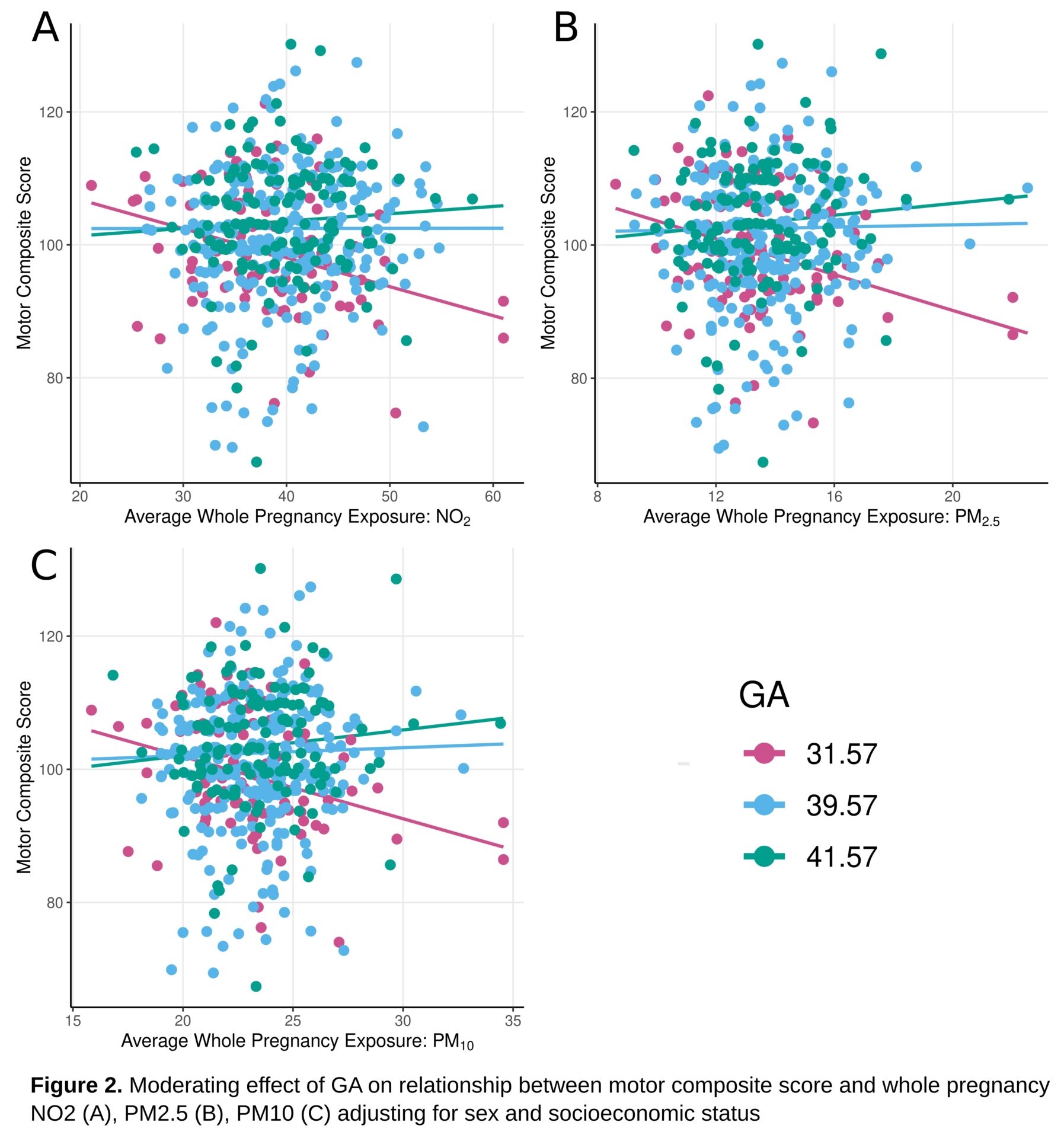Introduction
Air pollution represents a significant public health challenge, with an estimated 95% of the world’s population living with unhealthy air. Prenatal air pollution is associated with altered volumetric brain development (Bos et al 2023), developmental delay (Clifford et al 2016) and increased risk of cerebral palsy (Zhang et al 2024). The aim of this study was to assess the impact of maternal air pollution exposure across each trimester of pregnancy on offspring cognitive, language and motor abilities. We also considered the moderating effect of gestational age at birth (GA), in a representative population cohort from Greater London, UK.
Methods
502 toddlers from the Developing Human Connectome Project (Edwards et al 2022) were included [GA median (range) 39.57 (23.71-43.57), 264 male]. Research Ethics Committee approval was granted (14/LO/1169) and written informed parental consent was obtained. Maternal air pollution exposure was modelled based on residential postcode using the London Air Pollution Toolkit (Beevers et al 2013). Average exposure to NO2, and particulate matter (PM2.5 and PM10) from estimated conception date to date of birth was calculated, as well as average exposure for each trimester. Index of multiple deprivation was calculated from maternal postcode as a measure of socioeconomic status. Cognitive, language and motor abilities were assessed at median (range) 18.43 (17.26-34.49) months corrected age using the Bayley Scales of Infant and Toddler Development – 3rd Edition.
Linear regressions with 5000 permutations were used to assess the relationship between cognitive, language, and motor composite scores and pollutant exposure across pregnancy and within each trimester. The impact of average pollutant exposure across gestation and within Trimesters 1 and 2 were assessed across the whole cohort. Exposure in trimester 3 was assessed excluding infants born <28.00 weeks (n=20). Sex, index of multiple deprivation, GA, and if a parent spoke English as an additional language (N=224, for language analyses) were included as covariates. We also assessed the interaction between GA and pollutant exposure. Benjamini-Hochberg false discovery rate (FDR) correction was used to adjust for multiple comparisons.
Results
Higher maternal exposure to all pollutants in trimester one was associated with lower language composite scores at 18 months (Table 1, Figure 1A-C). Higher exposure to NO2 in trimester one was also associated with lower cognitive composite scores (Figure 1D). GA at birth significantly moderated the relationship between average maternal exposure to all pollutants across gestation and motor composite scores (Table 2, Figure 2). Posthoc analysis revealed pollutants were significantly associated with motor composite scores in infants born <37.00 weeks GA (all pollutants p<0.001) but not infants born ≥37.00 weeks (NO2 p=0.728, PM2.5 p=0.569, PM10 p=0.424).
Discussion
Higher maternal exposure to air pollutants during the first trimester is associated with poorer language abilities in toddlers. In infant born prematurely (<37.00 weeks GA), higher air pollutant exposure across gestation was also associated with poorer motor abilities. Our results add to the growing body of evidence that prenatal exposure to air pollution affects neurodevelopment in offspring. Reducing air pollutant exposure should be a public health priority.




